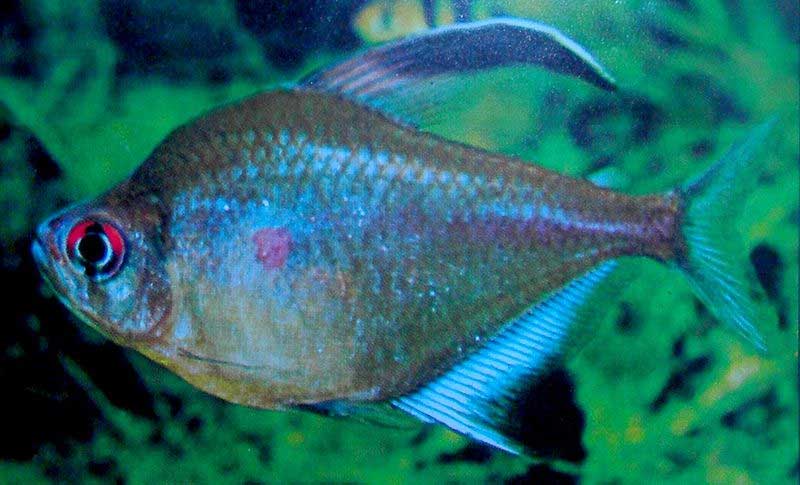Hyphessobrycon erythrostigma Cladus: Eukaryota Name Hyphessobrycon erythrostigma (Fowler, 1943) References * Hyphessobrycon erythrostigma Report on ITIS Vernacular names ------------- Bleeding Heart Tetra, Hyphessobrycon erythrostigma is a peaceful mid-dwelling community fish in the aquarium. Grows to the size of 64mm and lives about 5 years. It requires warm water (78 degrees F or 26 degrees C). This fish, like most tetras, needs soft, acid water, pH 6.5-6.8, with plenty of plants. This fish is somewhat susceptible to velvet disease and Ich. This fish is sensitive to water conditions. Does not usually live more than five years. Requires frequent partial water changes. Compatibility/Tankmates Bleeding Hearts are generally a peaceful fish but fin nipping may become a problem, Males can be territorial. Keep them in a small school (6 or more) and try not to keep them with fish with larger fins such as angelfish and bettas. They do well in a variety of community tanks, and like most tetras they do best in groups and with bushy plants. Make a great tank mate for corydoras and other bottom dwelling species. They are peaceful when they are surrounded by their own kind with a few exceptions, just like tiger barbs. They are also mischievous, nipping at others' tails and entering their territory looking for food. Sexing Female is more full bodied and the male has a larger dorsal fin. Breeding/Spawning Hard but not impossible, They have been bred in captivity and are egg layers. Coloration/Fins They have a splendid body shape and, after a month or two in captivity, their colors get very beautiful, especially when fed (two or three days a week) with frozen brine shrimp. The dorsal fin of the males can become long and flowing. Both sexes have the eye-catching, blood-red spot at the heart area. Both also have the black/white patch on the dorsal fin. Habitat/Care/Maintenance The Bleeding Heart Tetra or Spotfin Tetra is readily available. It can be obtained from most fish and pet stores, as well as online. Source: Wikispecies, Wikipedia: All text is available under the terms of the GNU Free Documentation License |
|

